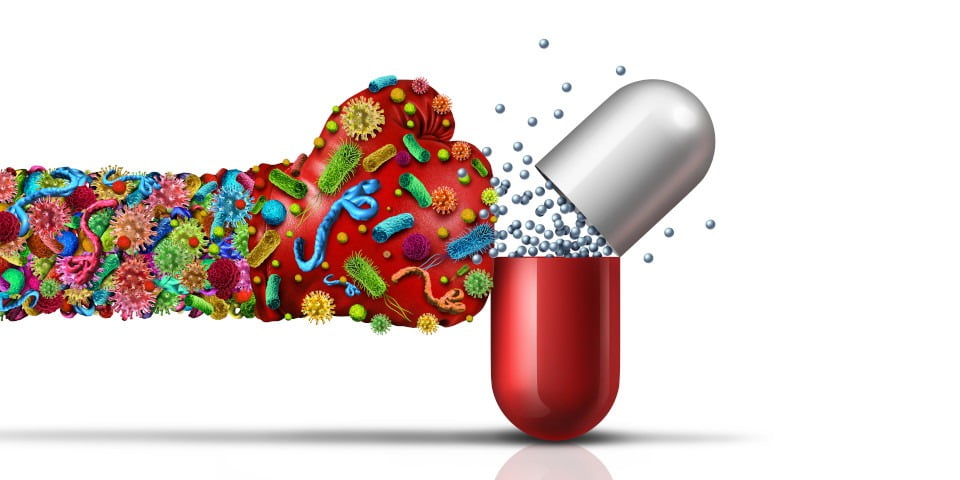Experts are warning Australians against complacency with the use of topical antibiotics. While the use of such creams and ointments is intended to speed up the healing of wounds and stop infection, they can do a lot more and the change is not always good.
Antibiotic resistance is thought to be a threat to global health, food security, and development today. Research shows it can affect people of any age in any country.1
“Any use of antibiotics encourages exposed bacteria to develop ways of becoming resistant. This includes antibiotic creams applied to the skin,” says Platinum Dermatology’s specialist dermatologist Dr Ritu Gupta. “People may think topical antibiotics are the best treatment for wounds and infection, but they are often unnecessary and there are viable alternatives.”
It is the bacteria rather than people that develop antibiotic resistance. These resistant bacteria can then be contracted by humans and the infections they cause are harder to treat than those caused by non-resistant bacteria. In some cases, they can be impossible to treat at all.
A US study2 also found that topical antibiotics can disrupt the skin’s microbiome – the mix of bacteria, yeasts, and parasites that live on your skin – which can actually invite unwanted bacteria in.
“Antibiotics are a precious resource that should be preserved for as long as possible. We should only be prescribing topical and oral antibiotics when and if they are required. We need to focus on prevention, especially in skin wounds through proactive and simple first aid to mitigate the need for treatment of infections. If you have someone in good health, ensure the wound is clean and dressed and then it doesn’t necessarily need an antibiotic or an antibiotic cream,” Dr Gupta says.
AFT Pharmaceuticals Managing Director Dr Hartley Atkinson says that awareness of antibiotic resistance is often overlooked for topical antibiotics.
“Antibiotic creams and ointments are flying under the radar when it comes to educating both medical practitioners and the community about correct use. We all need to be part of the solution and take action to preserve the power of antibiotics and slow the development of antibiotic-resistant bacteria. A significant focus needs to be targeted at topical antibiotics.
“Parents may think an antibiotic is best for their child’s skin problem, but the evidence shows that is simply not true in many cases. Researchers have identified a link between the overuse of topical antibiotics among children, and the drug resistant strains of the common staphylococcus aureu infection,” he says.3
“Keeping a wound clean with a salty water wash, which can be made up with a teaspoon of salt with a cup of warm water, is very helpful” Dr Gupta says.
Four expert tips for wound care without antibiotics:
- Always wash your hands before touching the wound and surrounding area.
- Use a saline solution to gently clean the area – this can be made at home by boiling a cup of water and adding half a teaspoon of household salt. Let it cool in a clean bottle or glass in the fridge before applying. Keep the solution for a maximum of 24 hours.
- Apply an antibacterial substance to the wound.
- Dress the wound appropriately and monitor daily for signs of infection.
1 http://www.who.int/news-room/fact-sheets/detail/antibiotic-resistance
2 https://aac.asm.org/content/early/2017/06/13/AAC.00774-17
3 http://aac.asm.org/content/58/5/2878.long






